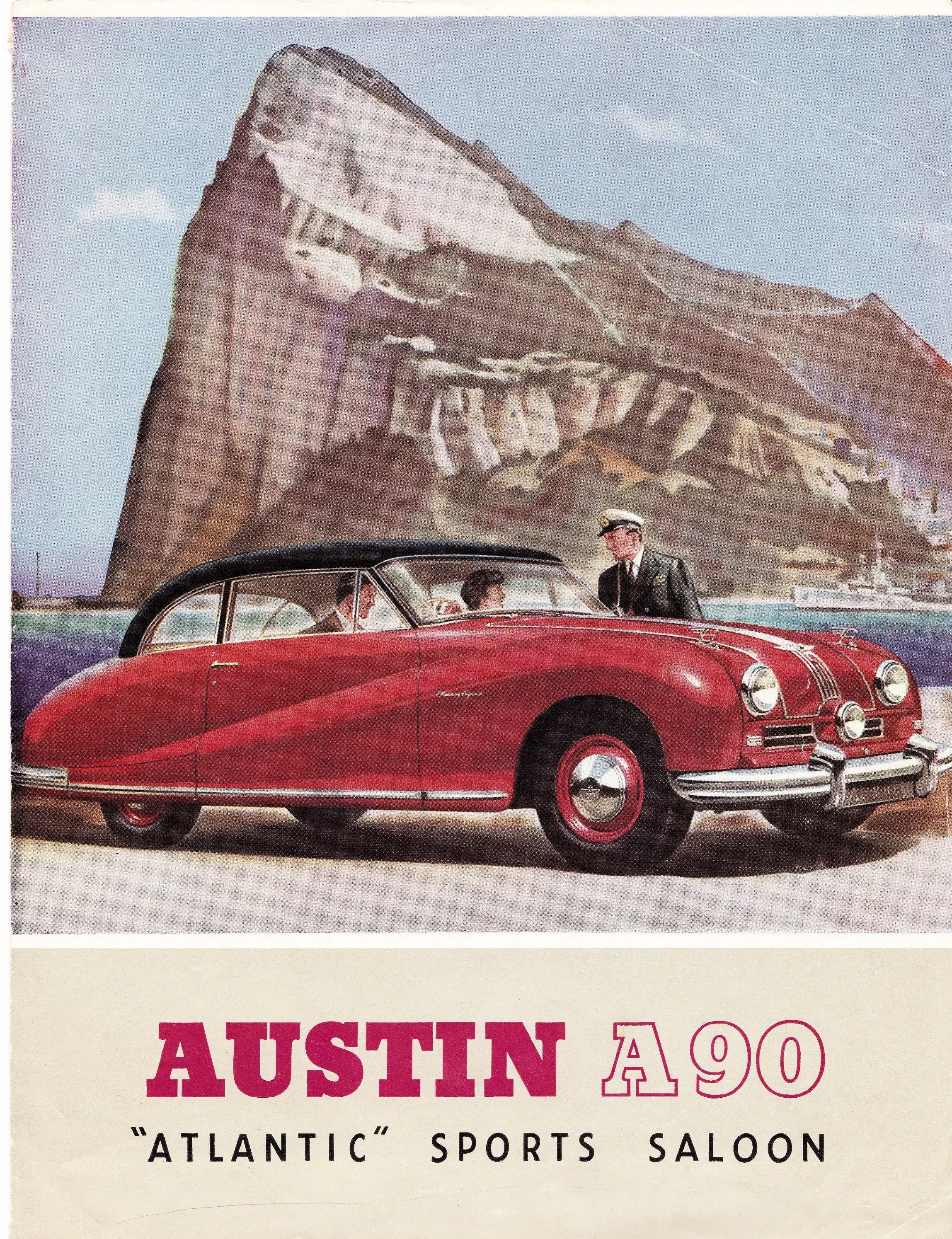AUSTIN A90 ATLANTIC
24 October 2023
Seventy-five years ago, the A90 Atlantic was a star of the first post-war London Motor Show. Many of the 562,954 visitors to Earls Court were agog at those gold-faced instruments, the ECKO radio set, the heater, the centrally mounted fog lamp and the "Jewelescent" paint finish. Plus, any car with a power-operated hood was a world apart from a realm of smog, Woodbines and queuing for the cheese ration.
And, as the name suggested, Austin aimed their latest model - combining "sports car performance with saloon car comfort" - at well-heeled drivers in the USA. In 1948 the bulk of car production was reserved for overseas, and Britain's motor manufacturers needed to export 75% of their output in order to be eligible for a steel quota. . The company's chairman, Leonard Lord, believed the A90 would earn the nation valuable dollars.

The A90's 2,660cc engine with twin SU carburettors was based on the 2.1-litre unit from the A70 Hampshire saloon to reduce costs. The Pininfarina-bodied Alfa Romeo 6C 2500 drophead displayed at the 1946 Geneva Salon is said to have inspired the Atlantic's distinctive lines. In Classic and Sports Car, Jon Presnell wrote, "an aircraft-style torsion-box had to be built into the bulkhead to tame the prototype's violent scuttle-shake".
Manufacture commenced in 1949, and that October, the very appealing 'Sports Saloon' joined the range – "a spectacular addition to the Austin range of dependable cars". It even boasted a wind-down centre section of the rear screen. When The Motor tested the Convertible, they praised "the particularly effortless way it performs" and concluded that it was one of "the most memorable models" they had ever tested.
But for all the A90's elaborate fittings and a very respectable top speed of over 90 mph, it failed to lure drivers from their Pontiac Chieftain Convertibles. Too many US motorists thought the Atlantic's four-cylinder engine inferior to Detroit's six or eight-cylinder plants. Motor Sport raved, "The Stock-Car Records established by an Austin A90 at Indianapolis rather take one's breath away." However, Austin sold just 350 examples in the USA, and dealers eventually offered a $1,000 discount.
Yet, the Atlantic did enjoy a measure of success in Australia, New Zealand and with British motorists who craved Sunset Strip glamour on a modest scale. The Atlantic was also the first British mass-production car with a power-operated hood and windows as optional extras. The 1951 model year saw the A90 gain fully hydraulic braking, a development many owners welcomed. Convertible production ended in January 1951, and the Saloon remained available until 1952.
7,981 Atlantics departed the Longbridge works, and few are on the road in the UK. Today, they vividly demonstrates Austin's ambitions immediately after the Second World War, raising its profile worldwide. And the Atlantic certainly lives up to the promise of a "car of distinction that will bring an added zest to business or pleasure-motoring".
